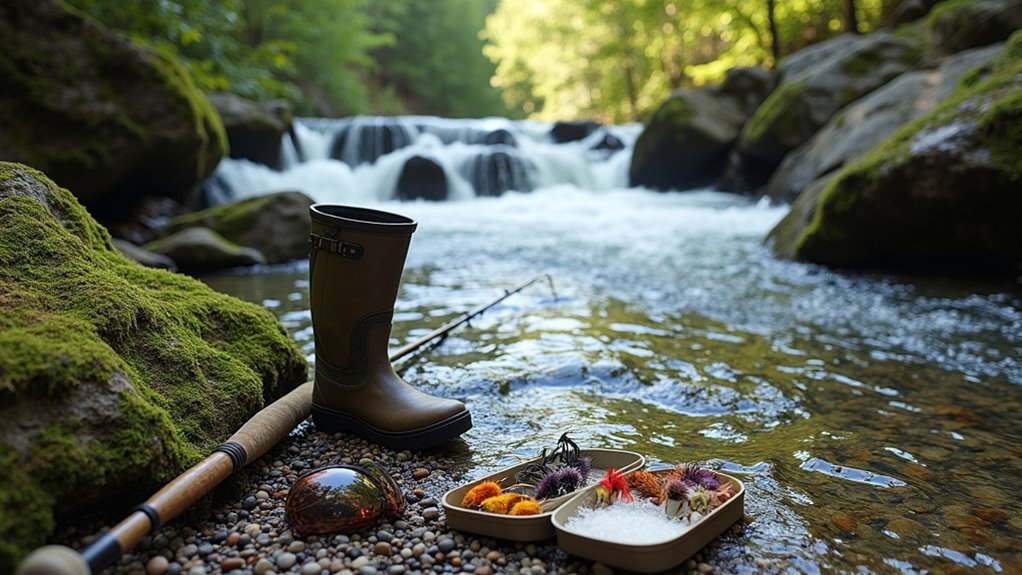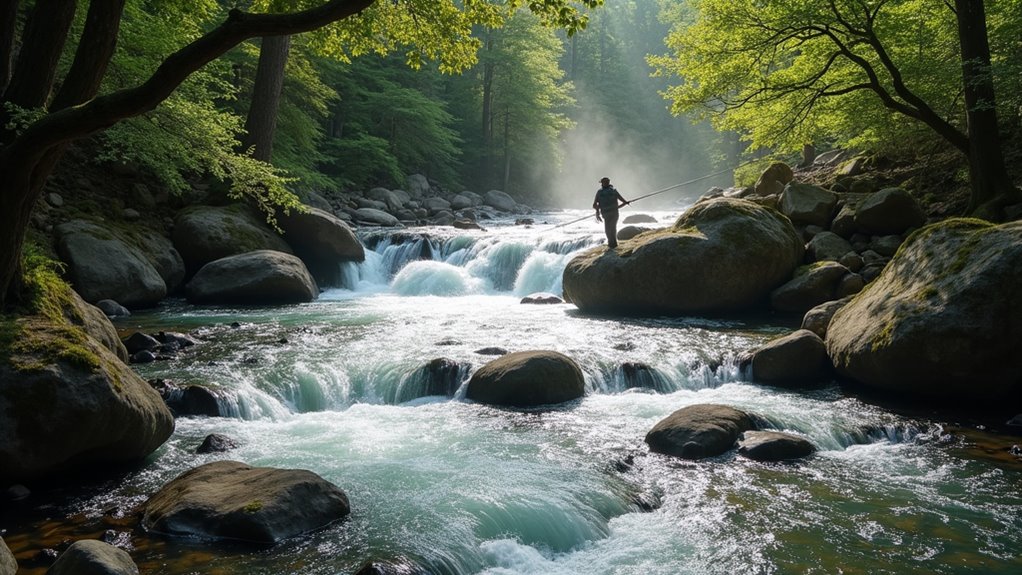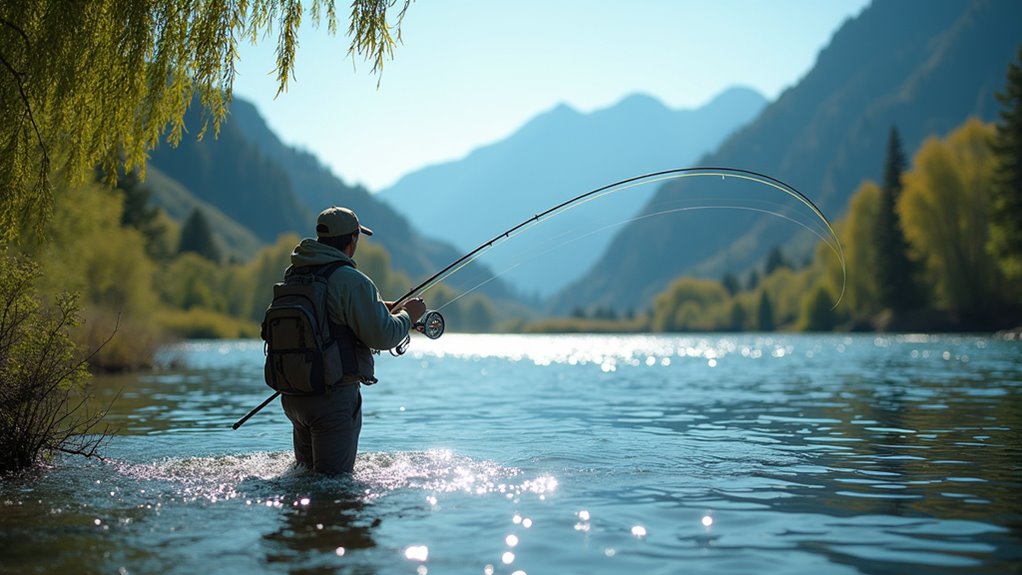Physical Address
304 North Cardinal St.
Dorchester Center, MA 02124
Physical Address
304 North Cardinal St.
Dorchester Center, MA 02124

Gain insider secrets that separate master fly fishers from weekend warriors—discover the game-changing techniques most anglers never learn.
You’ve probably stood at the water’s edge, watching fish rise just out of reach, wondering what you’re missing. The difference between consistently successful anglers and those who struggle isn’t luck—it’s understanding the subtle details that make or break your time on the water. From reading currents like a book to timing your approach with nature’s rhythms, there are specific techniques that’ll transform your fishing from hit-or-miss to predictably productive.

Before you cast your first line, you’ll need to become a detective of the water itself. Look for telltale signs where fish congregate: deeper pools, undercut banks, fallen logs, and rocky structures that create current breaks. These spots offer protection and feeding opportunities.
Pay attention to water speed and depth changes. Fish often hold in slower water adjacent to faster currents, where they can dart out to grab food without fighting the flow constantly.
Watch for rising fish or surface disturbances that indicate feeding activity.
Temperature matters too. In warm weather, fish seek cooler, deeper water or shaded areas. During cooler periods, they’ll move to sun-warmed shallows.
Study the water’s color and clarity—clear water requires stealthier approaches, while murky conditions allow closer positioning.
Just as expectant mothers need to consider comfortable positioning during outdoor activities, anglers must also prioritize their physical comfort when spending long hours reading water and waiting for the perfect cast.
When you’re selecting the right fly, understanding what insects are active during each season becomes your key to consistent success.
Spring brings midges and early mayflies, so stock up on small dark patterns like Zebra Midges and Blue-Winged Olives.
As winter ice melts and water temperatures rise, focus on tiny dark imitations that match the season’s first emerging aquatic insects.
Summer’s your prime time for caddisflies and larger mayflies—think Elk Hair Caddis and Adams patterns. You’ll also see terrestrials like ants and beetles near shorelines.
Fall triggers massive mayfly hatches, particularly Tricos and Blue-Winged Olives again. Don’t forget hoppers and crickets during late summer into fall.
Winter fishing means going subsurface with nymphs and midges since surface activity drops immensely. If you’re planning extended winter camping trips, this subsurface approach becomes even more crucial as you’ll have more time to work deeper waters methodically.
Watch the water’s surface for rising fish, check streamside vegetation for insects, and carry a small aquarium net to sample what’s actually in the water.

While selecting the right fly gets you halfway to success, your casting technique and presentation determine whether fish actually take your offering. Focus on smooth acceleration through your casting stroke, stopping abruptly at 10 and 2 o’clock positions. Let your rod do the work—you’re loading and unloading energy, not forcing it.
Master the basic overhead cast before attempting fancy techniques. Practice your timing with the pause between forward and back casts. Watch your line straighten completely before changing direction.
For presentation, aim to land your fly upstream from feeding fish, allowing natural drift. Mend your line to eliminate drag that’ll spook wary trout. Keep low and move slowly—your silhouette and vibrations travel through water faster than you think.
Remember that bigger fish are typically more cautious and selective, requiring even more precise presentations and stealthier approaches to avoid detection.
Since your casting technique means nothing without reliable gear, you’ll want to invest in quality equipment that matches your fishing style and local conditions. Your rod’s weight should correspond to your target species—lighter rods for trout, heavier for salmon or saltwater fish.
Quality gear matched to your target species and local conditions forms the foundation of successful fly fishing performance.
Proper maintenance extends your gear’s lifespan considerably. Here’s what you should prioritize:
Don’t skimp on your fly line—it’s your connection to the fish. Check for cracks, clean it monthly with mild soap, and replace it when memory coils develop. When venturing into remote fishing locations, always pack first aid items to handle any injuries that might occur during your outdoor adventure.
You’ve now got the arsenal to become an absolutely unstoppable force on the water! Remember, fly fishing mastery isn’t achieved overnight – it’s earned through countless hours of practice and observation. Keep refining your water-reading skills, stay curious about insect patterns, and don’t let equipment maintenance slide. Trust your instincts, adapt to changing conditions, and most importantly, enjoy every moment you spend pursuing these elusive fish. Your patience will pay off.